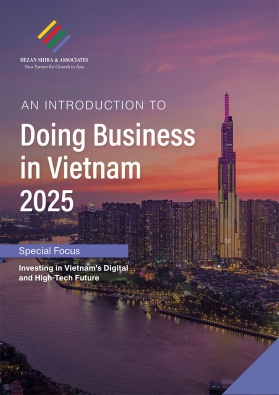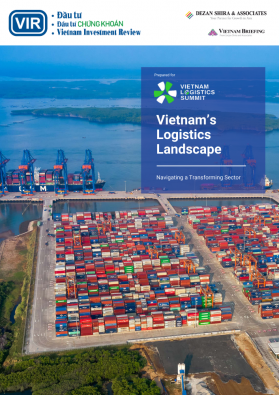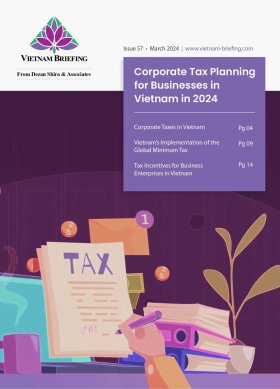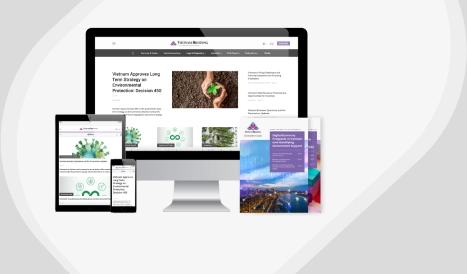HCMC Metro Planning and Transit-Oriented Development: Opportunities for Foreign Investment
Ho Chi Minh City (HCMC) is actively tackling the challenges of traffic congestion, which is worsening alongside the rapid urbanization of the city. HCMC metro planning is thus considered necessary for sustainable urban development and offers lucrative opportunities for private investors and developers.
During a meeting on January 13, HCMC authorities reported a 17 percent increase in congestion across several central areas of the city. While the gridlocks can partly be attributed to increased travel in the weeks leading up to Tet, Vietnam’s Lunar New Year holidays, it also highlights the urgent need to improve public transportation infrastructure in the city.
As the economic hub of Vietnam, traffic congestion in HCMC can significantly impact people’s livelihoods and business operations. To tackle this issue, both the state government and local authorities are expediting the development of major metro projects and relevant planning as essential steps toward sustainable urban development.
Also Read: Commuting During Tet: Strategies for Businesses in Vietnam
HCMC metro planning to 2035 with vision to 2060
Originally, according to the Prime Minister’s Decision No. 568/QĐ-TTg, released on April 8, 2013, the metro system in HCMC was to span a total length of about 170 kilometers and have seven depots. Additionally, the city planned to work on one tram line measuring 12.8 kilometers and two monorail lines totaling 43.7 kilometers. In total, the entire transit system would reach a length of 225.5 kilometers.
After more than a decade of studying and simultaneously developing Metro Line No. 1, the city’s leadership has introduced several revisions to the plan. The latest edition, published last December, includes multiple additions to scale up the whole project.
Developing an urban railway system in HCMC
On December 10, 2024, the HCMC People’s Committee submitted to the HCMC People’s Council a project to develop an urban railway system according to Conclusion No. 49-KL/TW of the Politburo. It is called the adjusted project for the general construction planning of HCMC until 2040, with a vision to 2060.
Under this plan, the length of Ho Chi Minh City’s urban railway network is about 510 km. Specific details are as follows:
By 2035
HCMC plans to invest in approximately 183 kilometers of metro-type urban railway, consisting of 74 kilometers of elevated tracks and 109 kilometers of underground tracks. The project will include 148 stations, with 54 elevated stations and 94 underground stations across six metro lines (from Line 1 to Line 6). The preliminary total investment is estimated at approximately US$980,215 million.
|
HCMC Metro Planning by 2035 |
||||
|
Metro line no. |
Name |
Total length |
Number of stations |
Notable features |
|
1 |
Ben Thanh – Suoi Tien |
19.7 km |
14 (3 underground, 11 elevated) |
– Officially came into operation on December 22, 2024; – Sponsored by Japan International Cooperation Agency (JICA); and – Aimed for further connections to Binh Duong Province and Bien Hoa City. |
|
2 |
Ben Thanh – Tham Luong |
48 km |
42 |
– Developed under three phases; – Connecting Thu Thiem and Cu Chi commune. |
|
3A |
Ben Thanh – Tan Kien Depot |
19.58 km |
10 (8 underground, 2 elevated) |
– Developed under three phases; – Connecting Tan An, Long An Province. |
|
3B |
Cong Hoa Intersection – Hiep Binh |
12.2 km |
10 (8 underground, 2 elevated) |
Connecting Binh Duong and Thu Duc City |
|
4 |
Thanh Xuan – Hiep Phuoc |
35.75 km |
32 (14 underground, 18 elevated) |
– Developed under 4 phases; and – Connecting from North to South Saigon |
|
4B |
Gia Dinh Park – Lang Cha Ca |
3.2 km |
3 underground |
Interconnection between Line 4 and 5 |
|
5 |
Depot Da Phuoc – Can Giuoc – Sai Gon Bridge |
23.39 km |
22 (16 underground, 6 elevated) |
Connecting Can Giuoc Bus Station to Sai Gon Bridge |
|
6 |
Dam Sen – Phu Lam |
6.8 km |
7 underground |
Completion expected last in the metro system |
By 2045
HCMC plans to add 168.36 kilometers of urban railway, including 120.71 kilometers of elevated lines and 47.65 kilometers of underground lines. This expansion will complete seven lines, numbered from line 1 to line 7, bringing the total length of the urban railway to approximately 351.08 kilometers. The preliminary total investment is estimated at US$21.36 billion.
By 2060
HCMC will continue to complete urban railway lines No. 8, No. 9, and No. 10, bringing the total length of the urban railway to approximately 510 km. The preliminary total investment is about US$24.06 billion.
Two additional lines
The Prime Minister has added two railway lines instead of the previously proposed 10 lines from the urban railway development project based on Conclusion 49 of the Politburo.
- Railway Line No. 11: The line, known as the riverside line, will be constructed as a light rail transit (LRT) system. It will begin in Binh Tan District and extend to Cu Chi District, covering a distance of 48.7 kilometers.
- Railway Line No. 12: The Prime Minister recognized the potential to connect Can Gio District. The proposed route will span 48.7 kilometers from District 7 to the Can Gio coastal tourist urban area. This line may be designed as either an LRT or an MRT system.
Transit-oriented development in HCMC
In June 2023, Vietnam’s National Assembly introduced Resolution No. 98/2023/QH15 (hereinafter, “Resolution 98”), which outlines the pilot implementation of various policies aimed at the development of HCMC. The resolution designates the pilot implementation of Transit-oriented Development (TOD) in HCMC.
Adopted worldwide, TOD is an urban planning and development model that creates residential and commercial areas around traffic hubs. This approach aims to concentrate populations near public transit, enhancing land use efficiency, reducing traffic congestion, and minimizing environmental pollution.
According to Resolution 98, the pilot TOD plan will include the below-discussed provisions.
Budget allocation for resettlement
HCMC People’s Council can use the local budget for public investment projects focused on compensation and resettlement related to urban planning near railway stations and Ring Road 3, a strategic traffic axis connecting to five radial highways — HCMC-Trung Luong, HCMC-Moc Bai, HCMC-Chon Thanh, Long Thanh-Dau Giay and Ben Luc-Long Thanh.
This aims to recover land, improve urban areas, facilitate resettlement, and create land funds for auctions to attract investors for urban development.
Investment and construction procedures
The authority and procedures for investment and construction related to compensation, support, and resettlement outlined in this plan shall comply with the competencies and procedures for group-A public investment projects prescribed under Law on Public Investment.
Construction density and infrastructure targets
In areas near stations and intersections defined in this plan, the HCMC People’s Committee may set construction density and infrastructure targets, following national regulations for urban planning and aligning with the technical and social infrastructure requirements in master planning projects.
Land expropriation requirements
Land expropriation for projects in this plan must follow these criteria:
- Project guidelines must be approved in the city’s medium-term public investment plans; and
- Position, border, and area of the expropriated land must be clearly defined in annual urban planning projects, independent urban planning, planning for land use, and plans for land use at the district level.
Piloting transit-oriented development along key metro lines and Ring Road 3
HCMC’s Metro Line No. 1 officially began operations in December 2024. Following this successful launch, the HCMC People’s Committee introduced an action plan for developing TOD sections surrounding Metro Lines No. 1 and 2, as well as along Ring Road 3.
According to the committee, the city will explore three TOD models in the station core area, the station transition area, and regions near traffic intersections.
TOD model in station core area
The first TOD model will be implemented in the station core area, which extends within a radius of 400 to 500 meters. This model aims to create a high-density, mixed-use, and multifunctional urban area, combining commercial and service spaces with residential housing. The primary mode of travel in this area will be walking, with urban railways serving as the main transportation system.
TOD model in station transition area
The second TOD model is being developed in the station transition area, covering a radius of 800 to 1,000 meters. This model, which also focuses on high-density urban development, will include mixed land usage for housing and social services. Internal traffic will primarily rely on walking and cycling, with connections to the station provided by buses, bicycles, and trams. Similar to the first model, transportation will mainly utilize urban railways.
TOD model in regions near traffic intersections
The third TOD model will focus on urban development concentrated around traffic intersections along Ring Road 3. In these areas, the city plans to develop urban spaces that facilitate convenient traffic connections, with the goal of establishing concentrated residential neighborhoods, urban functional areas, industrial parks, and logistics hubs.
In addition to the models above, HCMC will develop mid- to high-rise urban areas surrounding the central core, utilizing mixed land for residential and social services. Internal transportation will rely mainly on bicycles and trams, while external traffic will connect to branch roads and public transport.
Based on these three models, the city has selected 11 locations along the metro stations and Ring Road 3 for pilot development during the 2024-2028 period. Of these, nine areas will be developed from 2024 to 2025, while two areas will be developed between 2026 and 2028.
Opportunities for investors and developers
Capital mobilization for HCMC metro planning
The city aims to complete seven metro lines, including Line No.1, by 2035, with a total length of about 355 km. The total capital demand for each phase is about US$40 billion. To achieve the above goal, the project proposes 43 special mechanisms belonging to six main aspects to make HCMC more proactive in implementing projects, including:
- Planning;
- Capital mobilization policies;
- Procedures and implementation authority;
- Site clearance;
- Technical standards and technology; and
- Management and exploitation.
In the capital source plan, the project identifies public investment as the primary source. It also outlines a strategy to mobilize funds from various avenues, such as increasing central budget revenue, retaining city resources, developing TOD areas, and issuing local bonds. Throughout the implementation process, the city will continue to conduct research and seek out investors to participate in metro projects.
|
Capital Mobilization for HCMC’s Metro Development Project |
||||
|
Source |
2026-2030 |
2031-2035 |
||
|
US$ billion |
Proportion (%) |
US$ billion |
Proportion (%) |
|
|
HCMC’s budget |
5.81 |
35.54 |
13.3 |
55.45 |
|
State budget |
3.86 |
23.61 |
4.52 |
18.8 |
|
Local bonds and other borrowings |
4.34 |
26.54 |
1.97 |
8.19 |
|
Build-Transfer (BT) contracts |
2.34 |
14.31 |
4.22 |
17.55 |
|
Total |
16.35 |
100 |
24 |
100 |
Experts call for public-private partnership (PPP) utilization
There is a growing demand for implementing a public-private partnership (PPP) mechanism for metro and transit-oriented development projects. Currently, funding for public transport infrastructure primarily comes from the state budget and preferential loans from international financial institutions, known as official development assistance (ODA). Specifically, Vietnam has utilized ODA loans from Japan and various international organizations to construct urban railway lines in Hanoi and HCMC. However, it is clear that relying solely on this funding source is insufficient.
Experts argue that attracting resources from the private sector through the PPP model can not only alleviate the financial burden on the government but also leverage the expertise and experience of businesses. Estimates suggest that if the PPP model is successfully implemented, private investment could contribute between 20 and 30 percent of the total construction costs for TOD projects.
The need for applying the PPP model to HCMC’s urban railway and TOD projects has become evident, particularly following the delays on Metro Line 1 (Ben Thanh – Suoi Tien). This project experienced significant budget overruns, with costs rising from VND 17.387 trillion (approximately US$686.96 million) to over VND 43.7 trillion (around US$1.73 billion). This situation showcases the necessity for flexible solutions to improve coordination and investment efficiency.
Conclusion
HCMC’s updated metro planning aims to expand the railway system to approximately 510 kilometers by 2060, with significant investments planned over the coming decades. By 2035, HCMC intends to establish about 183 kilometers of metro lines, with multiple phases and connections to enhance public transportation.
The initiative aligns with the city’s goals for sustainable urban development and offers attractive opportunities for private investors. HCMC is proactively addressing traffic issues through comprehensive metro system development, ultimately aiming to improve mobility and support economic growth.
About Us
Vietnam Briefing is one of five regional publications under the Asia Briefing brand. It is supported by Dezan Shira & Associates, a pan-Asia, multi-disciplinary professional services firm that assists foreign investors throughout Asia, including through offices in Hanoi, Ho Chi Minh City, and Da Nang in Vietnam. Dezan Shira & Associates also maintains offices or has alliance partners assisting foreign investors in China, Hong Kong SAR, Indonesia, Singapore, Malaysia, Mongolia, Dubai (UAE), Japan, South Korea, Nepal, The Philippines, Sri Lanka, Thailand, Italy, Germany, Bangladesh, Australia, United States, and United Kingdom and Ireland.
For a complimentary subscription to Vietnam Briefing’s content products, please click here. For support with establishing a business in Vietnam or for assistance in analyzing and entering markets, please contact the firm at vietnam@dezshira.com or visit us at www.dezshira.com
- Previous Article Commuting During Tet: Strategies for Businesses in Vietnam
- Next Article Investment Support Fund for High-Tech Enterprises in Vietnam: Decree 182









